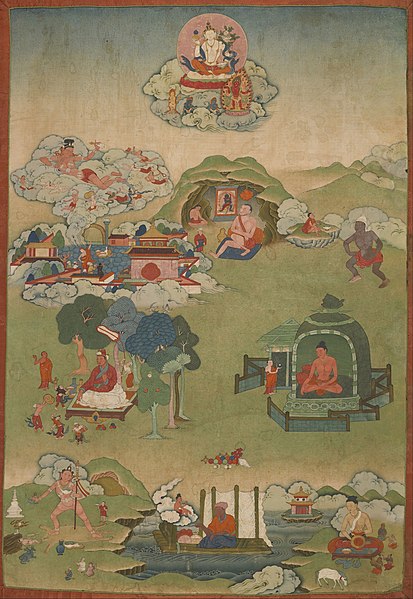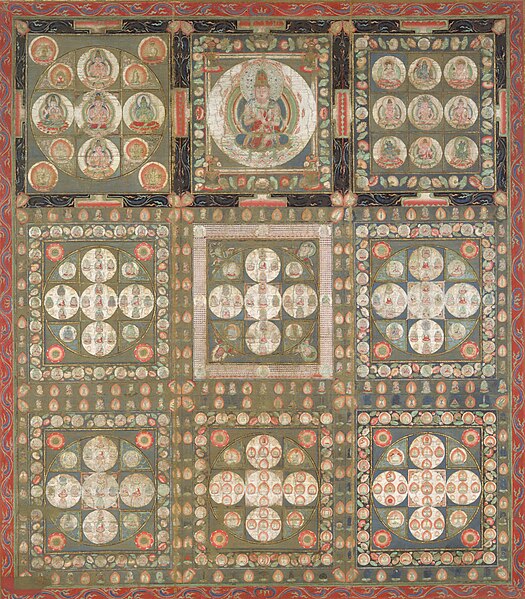Kālacakra is a polysemic term in Vajrayana Buddhism as well as Hinduism that means "wheel of time" or "time cycles". "Kālacakra" is also the name of a series of Buddhist texts and a major practice lineage in Indian Buddhism and Tibetan Buddhism. The tantra is considered to belong to the unexcelled yoga (anuttara-yoga) class.
A Kālacakra Mandala with the deities Kalachakra and Vishvamata
The Kālacakra Mandala depicts the teachings of the tantra in visual symbolic form.
Kālacakra deity with consort Visvamata
A stone Kālacakra Mandala at the Hiraṇyavarṇa Mahāvihāra, a Buddhist temple in Patan, Nepal built in the 12th century.
Vajrayāna, also known as Mantrayāna, Mantranāya, Guhyamantrayāna, Tantrayāna, Tantric Buddhism, and Esoteric Buddhism, is a Buddhist tradition of tantric practice that developed in the Indian subcontinent and spread to Tibet, Nepal, other Himalayan states, East Asia, and Mongolia.
A vajra and bell (ghanta), which are classic ritual symbols of Vajrayāna
Mahasiddhas, Palpung monastery. Note the figure of the great adept Putalipa at center, seated in a cave and gazing at an image of the meditational deity Samvara and the figure at the bottom left holding a skull-staff (khaṭvāṅga) and a flaying knife (kartika).
Diamond Realm mandala, based on the tantric Vajrasekhara Sutra, and symbolizing the final realization of Vairocana Buddha in Shingon
Naked tantrikas dancing and eating from skull cups (kapalas), closeup of a Chakrasamvara mandala








